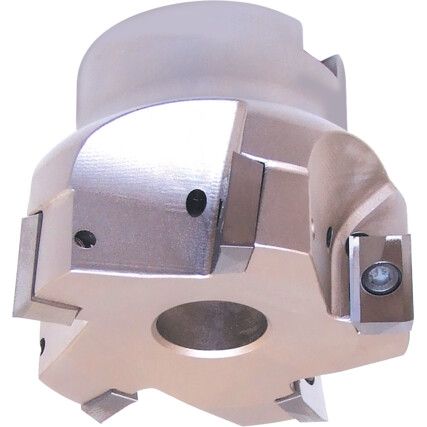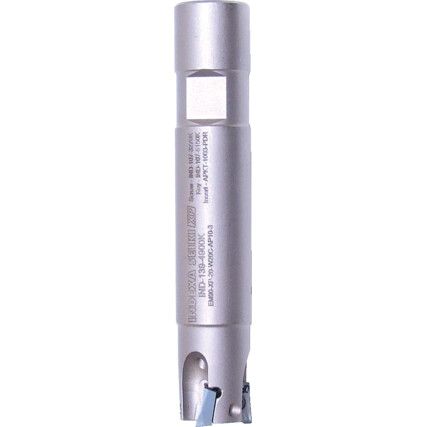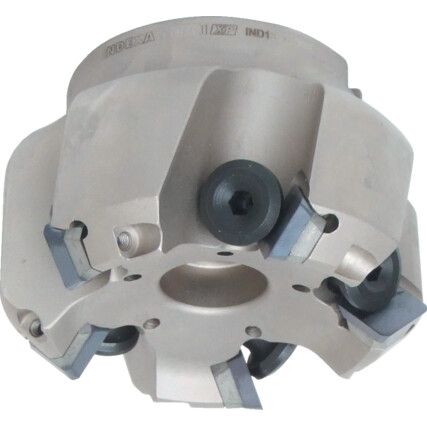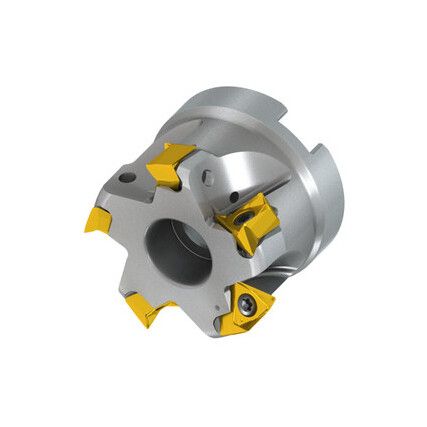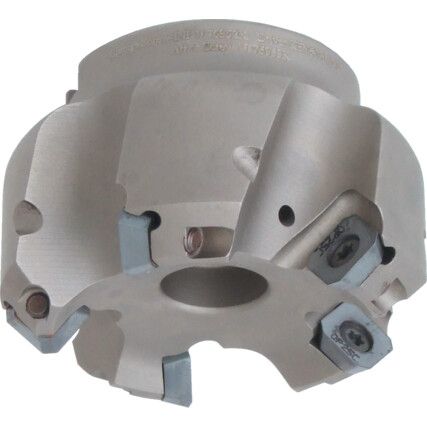Indexable Face Mills & Square Shoulder
Cromwell stock an extensive rage of square shoulder milling cutters and components, with products from well established brands such as Sandvik Coromant, Iscar, Indexa and many more. Browse our extensive collection today for the best possible tooling solution for your requirements.
What is square shoulder milling?
Square shoulder milling operations involve a milling cutter with a 90° entering angle. Square shoulder milling usually incorporates a singular solution for contouring, ramping, circular, helical and trochoidal interpolation milling, as well as many more.
Why square shoulder milling?
The process of shoulder milling produces two faces at the same time, requiring peripheral milling and face milling combined. The 90° angle is on of the key requirements for shoulder milling and is performed by square shoulder cutters, although end milling cutters, side and face cutters as well as long edge cutters can also be used.
Square shoulder milling types
• Shoulder Milling Cutters - Also referred to as shoulder face mills often incorporate a true 90° angle and are used to cut shallow shoulders. They are often used in place of traditional face milling cutters when used in applications involving axially deflecting surfaces or milling close to vertical faces.
• End Milling Cutters - Both indexable and solid carbide end mills are a good tooling option for shoulders requiring accessibility.
• Long Edge Milling Cutters - Long edge cutters hold an advantage over other cutters for milling deeper shoulders.
Square shoulder jargon buster
There are a myriad of technical terms involved with shoulder milling, to help get your head around some of these, Cromwell has produced this helpful jargon buster.
Arbor milling - A milling operation that incorporates a cutter mounted on a horizontal arbor.
Arc of the cut - The contact area between the piece being worked on and the cutting insert.
Axial cutting force - The main cutting force occurring parallel to the axis of rotation of the tool.
Axial rake - The angle created by the incline of the face of the insert and the tool axis.
Chip load - The thickness of the chip.
Clearance angle - The angle of relief behind the cutting edge stopping interference from the workpiece and the tool.
Climb milling - Milling in which the cutter rotation is in the same direction as the feed at the point of contact. This pulls the workpiece into the cutter, decreasing feed forces and power consumption.
Coarse-pitch cutter - A cutting tool with a small number of inserts.
Conventional milling - The opposite of climb milling. In this application the cutter rotation is in the opposite direction of the feed at the point of contact. This results in increased power consumption feed forces.
Copy mills - Used in 3D face milling, these mills allow for axial cutting depths that are greater than the length of the insert.
Copy milling - Milling that produces contoured or nonlinear surfaces.
Cutter diameter - The diameter of the cutter body.
Double negative rake angle - This negative geometry allows for good radial chip flow, at the cost of restrictions.
Double positive rake angle - Positive geometry allowing for good chip lift, the trade of is at higher speeds chips can get caught and recut.
Effective diameter - Measured at the outer cutting edge of the insert, this measurement is the maximum flat width that the machine can cut.
End milling - Uses a narrow cutter to cut perpendicular and parallel (to the spindle axis) surfaces.
Face milling - Milling applications where the workpiece is positioned perpendicular to the spindle axis.
Hand of cut - The direction of the cut.
Helical interpolation - A cutter which rotates about its own axis together in an orbiting motion about an ID or OD workpiece circumference.
Ramp milling - 3D face milling at a more advanced level.
Side milling - In side milling the workpiece is perpendicular to the cutter, which is mounted on an arbour.
Slot milling - Slot milling is used to produce a slot or channel.
Square shoulder face milling - Milling applications that are designed to perform the operations of both a face mill and an end mill.
Trochoidal milling - Advanced 3D milling that utilises high speed machining and technologies. It minimizes changes in the chip load, increases feed rates and consistencies, with a low radial and high axial depth of cut.
FAQs
*What cutting tool is used to machine a square shoulder?*
For all square shoulder milling applications, you will need a cutting tool that features 90° entering angle. A square shoulder milling cutter usually feature parallelogram inserts with 2 cutting edges.
